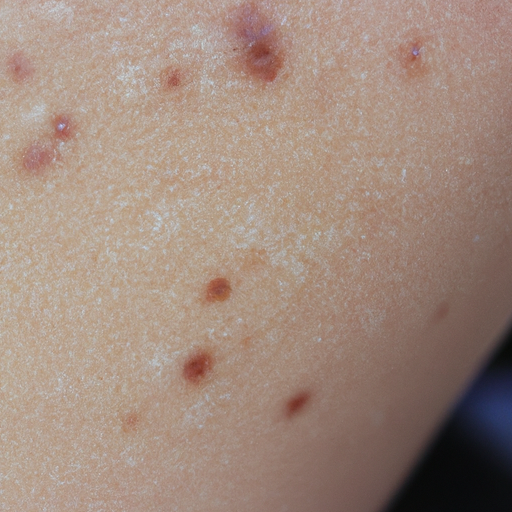Title: Unmasking Acne: A Deep Dive into Symptoms and Causes
As a dermatologist, I often encounter patients who are grappling with the distressing issue of acne. Acne is a common skin condition that affects people of all ages, but it is particularly prevalent among teenagers and young adults. It can manifest in various forms such as blackheads, whiteheads, pimples, cysts, and nodules. This article aims to unmask acne by delving deep into its symptoms and causes, providing valuable insights for those seeking to understand and combat this skin condition.
Acne primarily appears on the face, forehead, chest, upper back, and shoulders because these areas of the skin have the most oil (sebaceous) glands. The symptoms of acne can vary depending on the severity of the condition. Mild acne is often characterized by the presence of whiteheads and blackheads. These are caused by the clogging of hair follicles with oil and dead skin cells. More severe forms of acne may include painful lumps beneath the surface of the skin (nodules) or pus-filled lumps (cystic lesions).
Understanding the causes of acne is crucial in its treatment and prevention. Acne occurs when your hair follicles become plugged with oil and dead skin cells. This can lead to the growth of bacteria, resulting in inflammation and acne lesions. Several factors can contribute to the development of acne:
1. Overproduction of oil: Overactive sebaceous glands can produce excess oil, leading to clogged pores and acne.
2. Hormonal changes: Hormonal fluctuations during puberty or pregnancy can stimulate sebaceous glands, increasing oil production.
3. Inflammation: Inflammation in the skin can exacerbate acne by causing swelling and redness.
4. Certain medications: Some drugs, including corticosteroids, lithium, or testosterone, can trigger acne.
5. Diet: While the link between diet and acne is still under research, certain foods, such as dairy products or carbohydrate-rich foods, may trigger acne in some people.
6. Stress: Although stress doesn’t directly cause acne, it can worsen the condition in people who already have it.
While acne is a common skin condition, it can significantly impact an individual’s self-esteem and quality of life. Therefore, understanding its symptoms and causes is the first step towards effective management and treatment.
As a dermatologist, I recommend maintaining a consistent skincare routine, which includes gentle cleansing, avoiding harsh scrubs, and using non-comedogenic products that won’t clog pores. If over-the-counter treatments are not effective, it may be necessary to consult a dermatologist for prescription medications or other treatments.
In conclusion, unmasking acne involves understanding its symptoms and identifying its causes. While acne can be distressing, it is important to remember that it is treatable and manageable. With the right knowledge and care, you can navigate your way to clearer skin.
Keywords: Dermatologist, Acne, Symptoms, Causes, Skin Condition, Sebaceous Glands, Hair Follicles, Oil Production, Hormonal Changes, Inflammation, Medications, Diet, Stress, Skincare Routine, Treatment.



